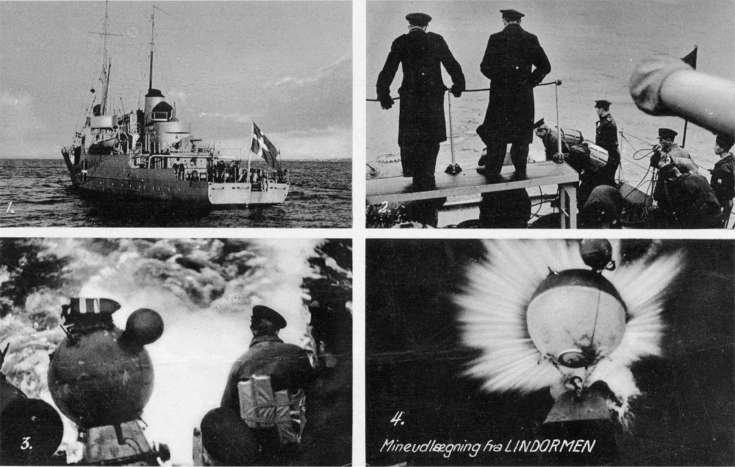|
You are here: 4Campaigns & Battles4Index4The 2nd World War |
||||||||||||||||||||||||||||||||||||||||||||||||||||||||||||
|
The 2nd World War 1939-1945:
Danish Navy left
|
|||||||||||||||||||||||||||||||||||||||||||||||||||||||||||
|
Sources: |
||
|
& |
Da Danmarks Flaade blev sænket, by F. H. Kjølsen, Commander s.g., H. Hagerups Forlag, Copenhagen, 1945 |
|
|
& |
Flådens Oprør, by Per Wessel Tolvig (editor), Marinehistoriske Skrifter, Copenhagen, 1953 |
|
|
& |
Flådens skibe 1950, af R. Steen Steensen, Det Schønbergske Forlag, København, 1950 |
|
|
& |
Flaadens skibe den 29. august 1943, og deres senere skæbne, by R. Steen Steensen, article in "Tidsskrift for Søvæsenet", 1953 |
|
|
& |
Flådens skibe og fartøjer 1945-1995, by Gunnar Olsen and Svenn Storgaard, Marinehistoriske skrifter, Copenhagen, 1998 (ISBN 87-87720-13-2) |
|
|
& |
Operation K N U, Den danske flåde 29. august 1943, by Hans Chr. Bjerg, article in "Tidsskrift for Søvæsenet", nr. 1, 1983 |
|
|
& |
Orlogsværftets Særberetning vedrørende Tiden fra 29. august 1943 til 31. marts 1944. |
|
|
& |
Søværnet og dets personel 1940-45, by Hans Chr. Bjerg, article in "Tidsskrift for Søvæsenet" nr. 1, 1998 |
|
|
& |
Søværnets vilkår og virke under den tyske besættelse april 1940 til august 1943, by S. S. v. F. Kieler, article in "Tidsskrift for Søvæsenet" nr. 1 og 2, 1993 |
|
|
& |
Vore undervandsbåde gennem 50 år (1909-1959), by R. Steen Steensen, Munksgaards forlag, Copenhagen, 1960 |
|
|
44You are also referred to the Naval Bibliography |
||
![]()
- Do you miss a major event on this Site,
or do you hold a great story?
Are you able to contribute to the unfolding of
the Danish Naval History,
please
e-mail
me, enclosures are welcome.
Please remember to list your sources.
You can also use the Naval Web Forum on this web-site.
![]()
|
MORE IN-DEPTH STORIES FROM |
|
Scuttling the Navy -
The attack on
the - -
Attack on |
|
THE TOPIC STORIES: |
|
- Wars against England (1801-1814) - Reconstructing the Navy (1814-1848) - The 1st Schleswig War (1848-50) - The interim War Years (1850-64) - The 2nd Schleswig War (1864) - The long Period of Peace (1864-1914) - The Navy during the 1st World War (1914-1918) - The Interim Years (1919-1939) - The Navy during the 2nd World War (1939-1945) - The Cold War Period (1945-1989) - |
|
SEE THE PHOTO GALLERIES: |
-
This page was last updated: -
This page was first published: October 20, 2002
Copyright © 2013-2016 Johnny E. Balsved - All rights reserved - Privacy Policy

-1337-1968-n.jpg)


-130-1990.jpg)